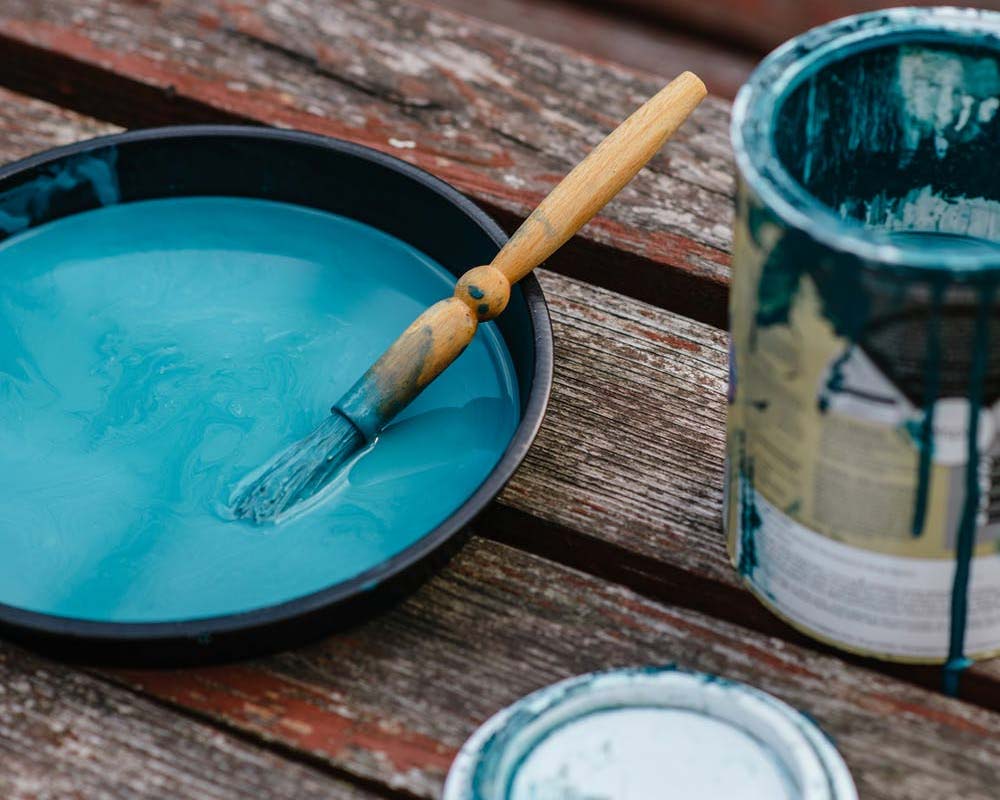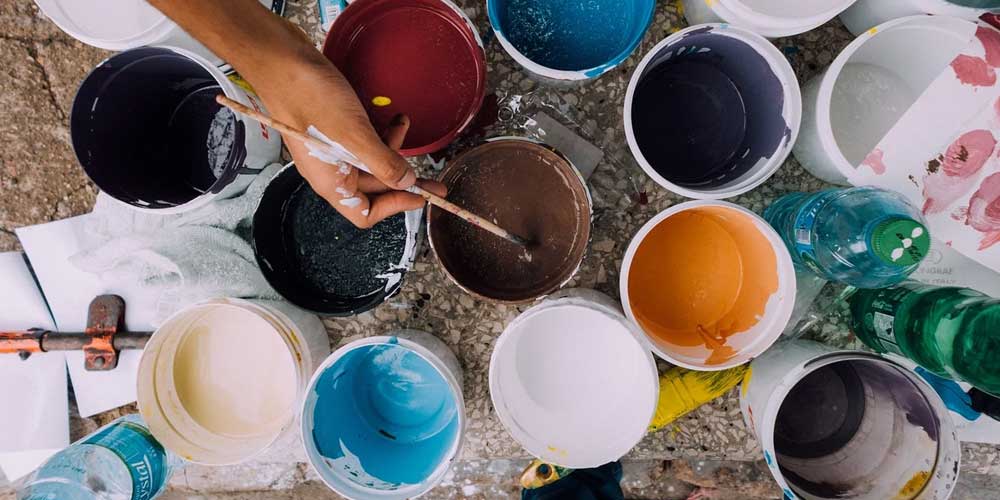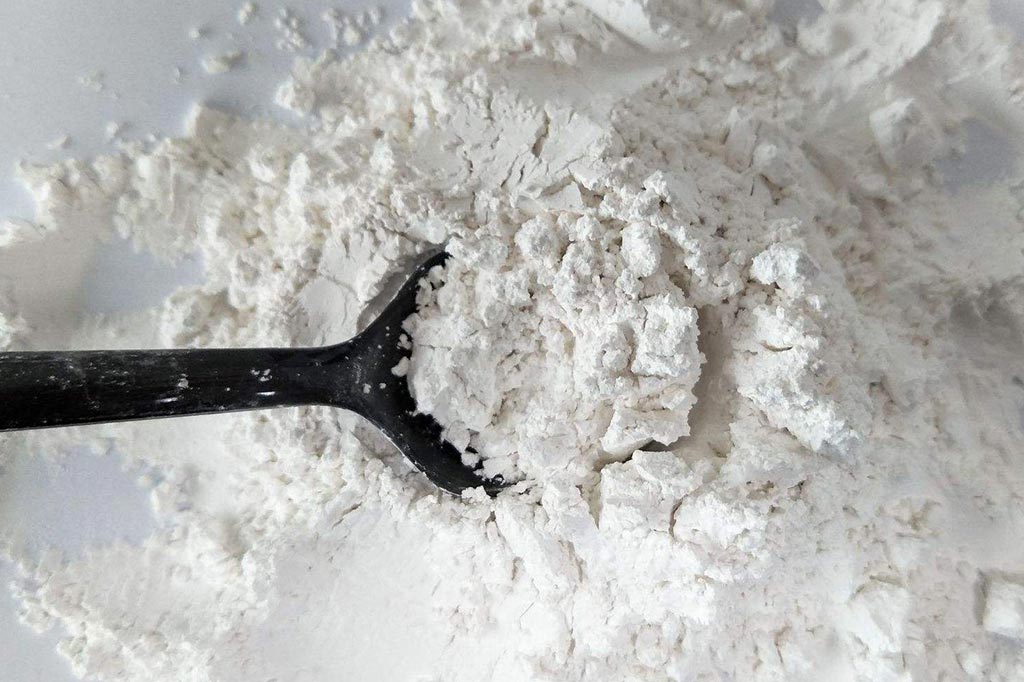Performance of Titanium Dioxide & Its Function and Application in Coatings
Titanium dioxide pigments are divided into two types: anatase type and rutile type. According to international practice, they are called R type and A type respectively. The rutile type and anatase type without post-treatment are called RI type and AI type respectively; the rutile type and anatase type after the post-treatment are called R2, R3 and A2 type respectively. At present, most of the rutile titanium dioxides on the market belong to R2 and R3 types, of which R2 type accounts for more than 70% of sales. R2 and R3 account for 77% and 22% of rutile titanium dioxide for coatings, respectively.
Performance and use of pigment grade titanium dioxide
Pigment-based titanium dioxide has high refractive index, strong achromatic power, large hiding power, good dispersibility, good whiteness, non-toxic, stable physical and chemical properties, and excellent optical and electrical properties, so it has a wide range of uses , Paint, plastic, paper, chemical fiber, ink, rubber, cosmetics, etc. all use pigment-grade titanium dioxide. Among them, the largest amount is paint, accounting for about 57%. In particular, rutile titanium dioxide is mostly consumed by the coating industry. With the rapid rise of China's automobile industry, construction industry and water-based coatings, the coating industry not only needs more titanium dioxide in quantity, but also has higher quality requirements and more varieties.
The refractive index of rutile titanium dioxide is 2.76, and the refractive index of anatase titanium dioxide is 2.55. The hiding power is determined by the difference between the refractive index of the pigment and the refractive index of the medium, and their relative values can be calculated according to the formula. The reflection coefficient of rutile titanium dioxide is 25% to 30% higher than that of anatase titanium dioxide, which means that if it produces the same hiding power as anatase titanium dioxide, the amount of rutile titanium dioxide can be reduced by 25% to 30%. In addition, rutile titanium dioxide has a compact structure, relatively stable, low photochemical activity, resistance to ultraviolet light, is not easy to pulverize outdoors, and has better weather resistance and gloss than anatase titanium dioxide. Therefore, it is widely used in various outdoor coatings with high weather resistance for high-grade ships, bridges, automobiles, buildings, etc., which accounts for about 70% of the coatings. Anatase titanium dioxide is easy to pulverize and yellow, so it is generally only used For indoor coatings or primers, the amount only accounts for 30% of the titanium dioxide used in coatings.
The role of pigment grade titanium dioxide in coatings
Coatings are viscous suspensions composed of base materials, pigments, fillers, solvents and additives. It is coated on the surface of the object to form a tough coating film, which plays a role of decoration and protection on the object.

Regardless of solvent-based or water-based coatings, if titanium dioxide is used, its role is not only to cover and decorate, but also to improve the physical and chemical properties of the coating, enhance chemical stability, and even improve hiding power, color reducing power, and corrosion resistance., Light resistance, weather resistance, enhance the mechanical strength and adhesion of the paint film, prevent cracks, prevent the penetration of ultraviolet rays and moisture, thereby delaying aging and extending the life of the paint film. At the same time, it can save materials and increase varieties.
Regardless of solvent-based or water-based coatings, if titanium dioxide is used, its role is not only to cover and decorate, but also to improve the physical and chemical properties of the coating, enhance chemical stability, and even improve hiding power, color reduction power, and corrosion resistance. , Light resistance, weather resistance, enhance the mechanical strength and adhesion of the paint film, prevent cracks, prevent the penetration of ultraviolet rays and moisture, thereby delaying aging and extending the life of the paint film. At the same time, it can save materials and increase varieties.
Among the pigments, white pigments are the most widely used. Both white paints and light-colored paints use it. Therefore, the amount of white pigments used in paint production is much more than other pigments. The white pigments commonly used in coatings include zinc white, lithopone, titanium white and so on. Because some synthetic resin coatings have a high degree of polymerization, if zinc white is added, the zinc white will have a tendency to thicken due to its alkalinity and anti-acid effect with the free fat in the coating; if zinc white is added, the weather resistance will be poor. But the use of titanium dioxide can improve the above shortcomings. Because the titanium dioxide particles are small and uniform, and the photochemical stability is high, in terms of hiding power, rutile titanium dioxide is 7 times that of zinc white and 5.56 times that of lithopone, and anatase titanium dioxide is 5.57 times that of zinc white. Lithopone is 4.3 times; in terms of decoloring power, rutile titanium dioxide is 8.3 times that of zinc white and 6.25 times that of lithopone. Anatase type titanium dioxide is 6.4 times that of zinc white and 4.8 times that of lithopone. Times. In terms of use effect, 1t of titanium dioxide is at least equivalent to 4t of lithopone; in terms of service life (referring to outdoor chalking resistance), the coating with titanium white as a pigment is 3 times higher than that with lithopone as a pigment. Therefore, the use of titanium dioxide can greatly reduce the amount of pigments in the entire coating, and the coatings made are bright in color, not easy to yellow, light resistance, heat resistance, abrasion resistance, weather resistance, alkali resistance, sulfur resistance, and dilute acid resistance. It is precisely because titanium white has superior performance than zinc white and lithopone, it has become the best white pigment indispensable in paint production. The amount of titanium dioxide accounts for more than 90% of the total amount of pigments used in coatings, and more than 95% of the total amount of white pigments used in coatings. It accounts for 10% to 25% of the cost of coating raw materials.
Article source: China Powder Network
Application analysis of calcium carbonate in industrial fillers
In recent years, calcium carbonate has been widely used in the plastic filling industry because of its excellent properties and low price. Compared with other inorganic mineral powder materials, the color of calcium carbonate itself is whiter, with better stability and better plasticization.
1. Rubber industry
Calcium carbonate is one of the largest fillers used in the rubber industry. A large amount of calcium carbonate is filled in the rubber, which can increase the volume of its products and save expensive natural rubber, thereby greatly reducing the cost. Calcium carbonate is filled into rubber to obtain higher tensile strength, tear strength and abrasion resistance than pure rubber vulcanizates.

2. Calcium carbonate in the binder and sealant
Calcium carbonate is widely used as a filler in adhesives and sealants. It has the advantages of narrow particle size distribution, large specific surface area, low oil and water absorption, etc. It can improve its rheological properties in PVC plastisols, enhance and reduce costs in silicone structural sealants, and can play an incremental reinforcement and heat-resistant role in hot melt adhesives. The adhesive can play a role in thickening and thickening. Application in adhesives and sealants can significantly reduce costs and improve bonding performance.
3. Paper industry
The use of calcium carbonate in the paper industry can ensure the strength and whiteness of the paper, and the cost is low. It can make the paper have good brightness, solid structure, easy writing, uniform coating, low friction, easy to dehumidify and easy to dry.

4. Plastic industry
Calcium carbonate can play a role as a skeleton in plastic products, which has a great effect on the dimensional stability of plastic products, and can also increase the hardness of the products, and improve the surface gloss and surface smoothness of the products. As the whiteness of calcium carbonate is above 90%, it also replaces expensive white pigments.

5. Paint industry
The amount of calcium carbonate in the paint industry is also relatively large, for example, the amount of calcium carbonate in thick paint is more than 30%.

6. Water-based coating industry
Calcium carbonate has a wider range of uses in the water-based paint industry, which can make the paint non-sediment, easy to disperse, and have good gloss. The amount of water-based paint is 20-60%.
7. Chemical building materials
In recent years, a new type of composite material-calcium plastic material has appeared in the building materials industry. This material has many excellent properties of wood, plastic and paper. It has the characteristics of heat resistance, chemical resistance, cold resistance, sound insulation, shock resistance, and easy processing. In packaging, building materials, pipes, etc., it largely replaces paper and wood.
8. Application of calcium carbonate in medicine, food, feed, etc.
Calcium carbonate is one of the important components in the pharmaceutical industry's culture medium. In addition to providing Ca elements, calcium carbonate also acts as a buffer for pH changes during stable fermentation culture. Therefore, calcium carbonate becomes a buffer for microbial fermentation in the pharmaceutical industry. Among pharmaceutical reagents, calcium carbonate can generally be used as a filler, while in anti-acid tablets, it has a certain medicinal effect. Calcium carbonate can be used as a food additive, and a small amount should be added to food, usually not more than 2%, to ensure the intake of calcium necessary for the human body. Because under normal circumstances, the total amount of calcium in the human body is about 1200 grams, 99% of which are present in the bones and teeth, and 1% is an essential component in the human blood, so carbonic acid is used in various food additives. Calcium is also one of them.
Article source: China Powder Network

